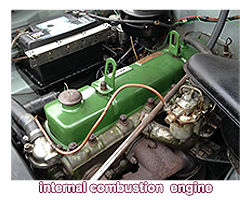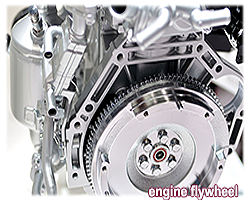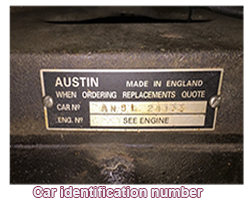
INTERNAL COMBUSTION ENGINE(IC): Describes an engine that burns fuel within itself as a means of developing power, typically applying to four-stroke gasoline and diesel engines.
Describes an engine that burns fuel within itself as a means of developing power, typically applying to four-stroke gasoline and diesel engines.
ENGINE CALIBRATION UNIT: Describes an electronic component that can be specifically programmed to design each car model to control the M/C solenoid. Plugs into the Electronic Control Module (ECM).
ENGINE CONTROL MODULE: (ECM)Describes an advanced electronic computer whose role is to monitor engine conditions to set engine settings to allow optimal air/fuel mixture combustion.
ENGINE-CONTROL SYSTEM: Describes an on-board computer whose role is to regulate the operation of the engine through monitoring specific characteristics (rpm, coolant temperature, intake airflow, etc.) by way of a network of sensors that control key variables (fuel metering, spark timing EGR, among others.) according to pre-programmed schedules.
ENGINE COOLANT: Describes the engine's cooling system's liquid to prevent freezing in very low temperatures.
ENGINE DISPLACEMENT: Describes the formula used to determine the overall displacement for a reciprocating piston engine by multiplying the space's volume through which the piston's head moves in the entire length of its stroke by the number of cylinders in the engine- with the result provided in cubic inches.
ENGINE FLYWHEEL: Describes the spinning plate located at the end of the crankshaft whose role is to smooth out any disruptions in the engine's power delivery and retain some of the energy generated to prevent the engine from stalling under pressure.
ENGINE IDENTIFICATION NUMBER (EIN) Denotes the unique number stamped on every car engine before it leaves the factory, which should match the number on the vehicle identification plate embedded on the vehicle's chassis.
ENGINE KNOCK: Describes a situation that occurs when the car engine is running and audible knocking noise is heard. The knock is caused when the fuel in the cylinders is ignited too early, spontaneously resulting in flame fronts and shock waves causing high thermal and mechanical stress levels. Consistent engine knock can cause severe damage to the engine.
ENGINE LAYOUT: Describes the type of engine, relating to the arrangement of its cylinders and their number and how and where the engine is located in the vehicle and which direction it is placed.
ENGINE MOUNTING: Describes the flexible support for the engine - an elastic setting, usually made from rubber, interposed between the lugs on the engine and the frame of the vehicle.
ENGINE OIL: Describes the oil within the engine used to lubricate the moving components. Most modern engines use multigrade oil.
ENGINE OIL LEVEL WARNING LIGHT: Describes a light on the instrument panel engineered to light up when the oil levels in the sump fall below a certain level
ENGINE OVERHAUL: Describes a situation generally cause when an old engine begins to burn large quantities of oil, degrading its power. An engine overhaul entails dismantling the engine and restoring it to the manufacturer's original tolerances by replacing worn parts, re-boring the cylinders, regrinding the crankshaft, and many other ancillary procedures.
ENGINE PARAMETERS: Describes the term used when describing emission controls for those engine characteristics sensitive to engine performance, such as brake horsepower (bhp), general engine performance, and fuel economy.
ENGINE SEQUENCE TEST: Describes a test that can be carried out to determine how well oil quality is liable to delay if not prevent engine rusting, corrosion, scuffing, wear, and the formation of sludge and varnish.
ENGINE SIZE: Describes a typical car engine's displacement or capacity.
ENGINE SPEED: Denotes the number of revolutions per minute (rpm) at which the engine crankshaft turns, irrespective of whether the vehicle is stationary or in motion.
ENGINE SPEED LIMITER: Describes a device that can be added to a vehicle engine to act as a regulator restricting engine power when a certain number of RPMs has been reached.
ENGINE SPEED SENSOR:  Describes a magnetic pick-up that scans the flywheel teeth producing one output signal per scanned tooth or a hall generator in the distributor. The sensor's signals are passed to the electronic control unit.
Describes a magnetic pick-up that scans the flywheel teeth producing one output signal per scanned tooth or a hall generator in the distributor. The sensor's signals are passed to the electronic control unit.
ENGINE TIMING: Describes the point of time when the spark generated will ignite the air/fuel mixture (ignition timing).


